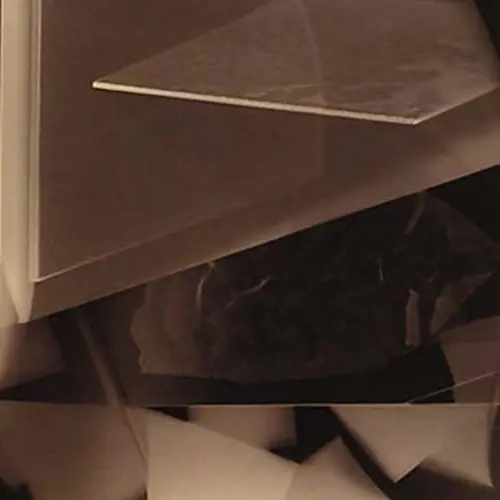In this, Goto’s first exhibition, he showed five series of photographs made over the preceding decade. With the intention of disrupting the prevailing conventions of exhibition display, he incorporated graphic and cinematic elements into the gallery presentation.
A silkscreen exhibition poster was designed by Andrzej Klimowski, with an extended essay by Craigie Horsfield on the reverse. In an attempt to bathe the space in a diffuse overall light, gauze panels were hung below the spotlighting track.
A fragmented exhibition soundtrack consisting of extraneous sounds and voices, interspersed with silences, mixed with the ambient buzz of the gallery and street beyond. The voices, which spoke in Czech and Polish, underscored the European orientation of Goto’s images. The recording was made in collaboration with Terry Garland, Franta Provaznik and Ewa and Craigie Horsfield.
These are European photographs. Goto has said that he regards the American influence on photography, particularly in western Europe as having been inappropriate, as having displaced or masked a rich and extensive European language. He identifies the strands of this tradition as extending from the Russian constructivists, through the great flowering of German photography in the 1930s, into eastern European and, most importantly, Czech photography of the post-war years to the present.
It is not surprising to find echoes of these voices in his work. His achievement has been to assimilate the language of this transition so that, whilst the influences of Laszlo Moholy-Nagy, Josef Sudek or Jan Svoboda are clearly present, they are welded and synthesized into a powerful and original whole.
The pictures show a formal rigour combined with an intensity of vision in which the form is altered by the impulsion of content. There is an exuberance and overflowing of ideas combined with passion and tenderness. Where they failed, as some of the photographs do, it is where they are overbalanced, tied by the form or disrupted by the idea. Many of the images are beautiful and mysterious and it is misleading to put too much stress on the formal impact of the pictures gathered together. They connect with a tradition and an approach to art that goes beyond the confines of photography, they show a profound attention to social, ethical and spiritual value. They are important not only as an alternative voice in the British Photography but because they relate to questions of recognition and of resistance that are central to our experience. They have a quality of goodness that informs them and, in the best of these pictures, transcends the confines the image.”
Text written by Craigie Horsfield
For further details on our past programme, visit our Archive and Study Room.










